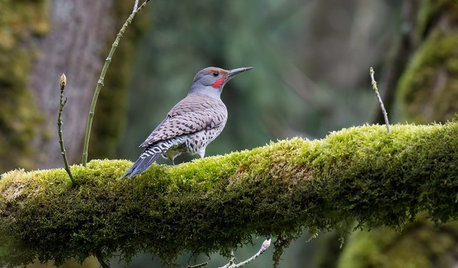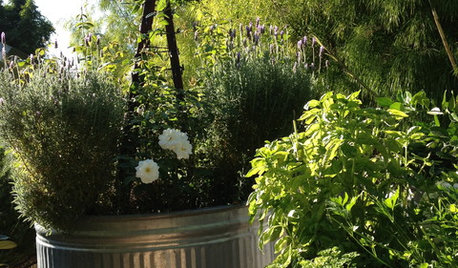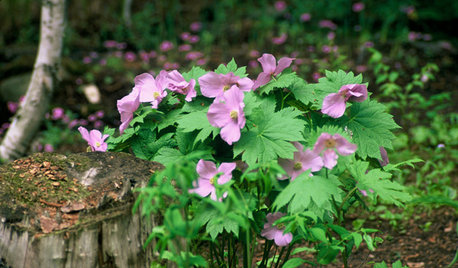Seed patch
anney
14 years ago
Related Stories

GARDENING GUIDESHow to Plant a New Lawn From Seed
Choose from more grass varieties and save money over sod by starting your lawn from seed
Full Story
GARDENING GUIDESInvite Cellophane Bees to Your Garden by Providing Patches of Bare Soil
Look for cellophane bees (Colletes) pollinating flowering trees and shrubs in U.S. gardens this spring
Full Story
EDIBLE GARDENSHow to Grow Your Own Sweet Summer Crops
This guide will help any gardener get started on growing the freshest warm-season veggies and berries for summer
Full Story
GARDENING GUIDESBackyard Birds: Healthy Home Habitats for Northern Flickers
These colorful woodpeckers found across the U.S. and Canada love berries, seeds and ants and often nest in deep burrows in trees
Full Story
GARDENING GUIDESHow to Fix Bare and Yellow Lawn Spots
Restore your turf’s good looks by reseeding unsightly patches
Full Story
EDIBLE GARDENSGrow Herbs for Fresh Flavor and Good Looks in the Garden
With sun and a patch of ground, you can have all the fresh flavor you need for cooking right outside your door. Here's how to get started
Full Story
GARDENING GUIDES7 Shade-Loving Rarities of the Plant World
Cultivate a discriminating air in a shady garden patch with these uncommon woodland wonders
Full Story
MOST POPULARSummer Crops: How to Grow Sunflowers
Savor snack-tastic sunflower seeds once the radiant blooms have faded — if the birds have saved you any, that is
Full Story
WINTER GARDENINGExtend Your Growing Season With a Cold Frame in the Garden
If the sun's shining, it might be time to sow seeds under glass to transplant or harvest
Full Story
FALL GARDENINGBe Your Own Wildflower Nursery
Gather seeds from your garden in fall, and you'll have a selection of plants for next year — without spending a dime
Full StorySponsored
Industry Leading Interior Designers & Decorators in Franklin County






iam3killerbs
anneyOriginal Author
Related Professionals
Clemson Landscape Architects & Landscape Designers · Middletown Landscape Contractors · Barrington Landscape Contractors · El Reno Landscape Contractors · Fort Mill Landscape Contractors · Hawaii Landscape Contractors · Boise Decks, Patios & Outdoor Enclosures · Coatesville Decks, Patios & Outdoor Enclosures · Justice Decks, Patios & Outdoor Enclosures · Lebanon Decks, Patios & Outdoor Enclosures · Meridian Decks, Patios & Outdoor Enclosures · New York City Decks, Patios & Outdoor Enclosures · Parker Decks, Patios & Outdoor Enclosures · Rocklin Decks, Patios & Outdoor Enclosures · San Diego Decks, Patios & Outdoor Enclosureszeedman Zone 5 Wisconsin
Macmex
anneyOriginal Author
gpaintjr
anneyOriginal Author
Macmex
gpaintjr
anneyOriginal Author
iam3killerbs
Macmex
zeedman Zone 5 Wisconsin
Macmex